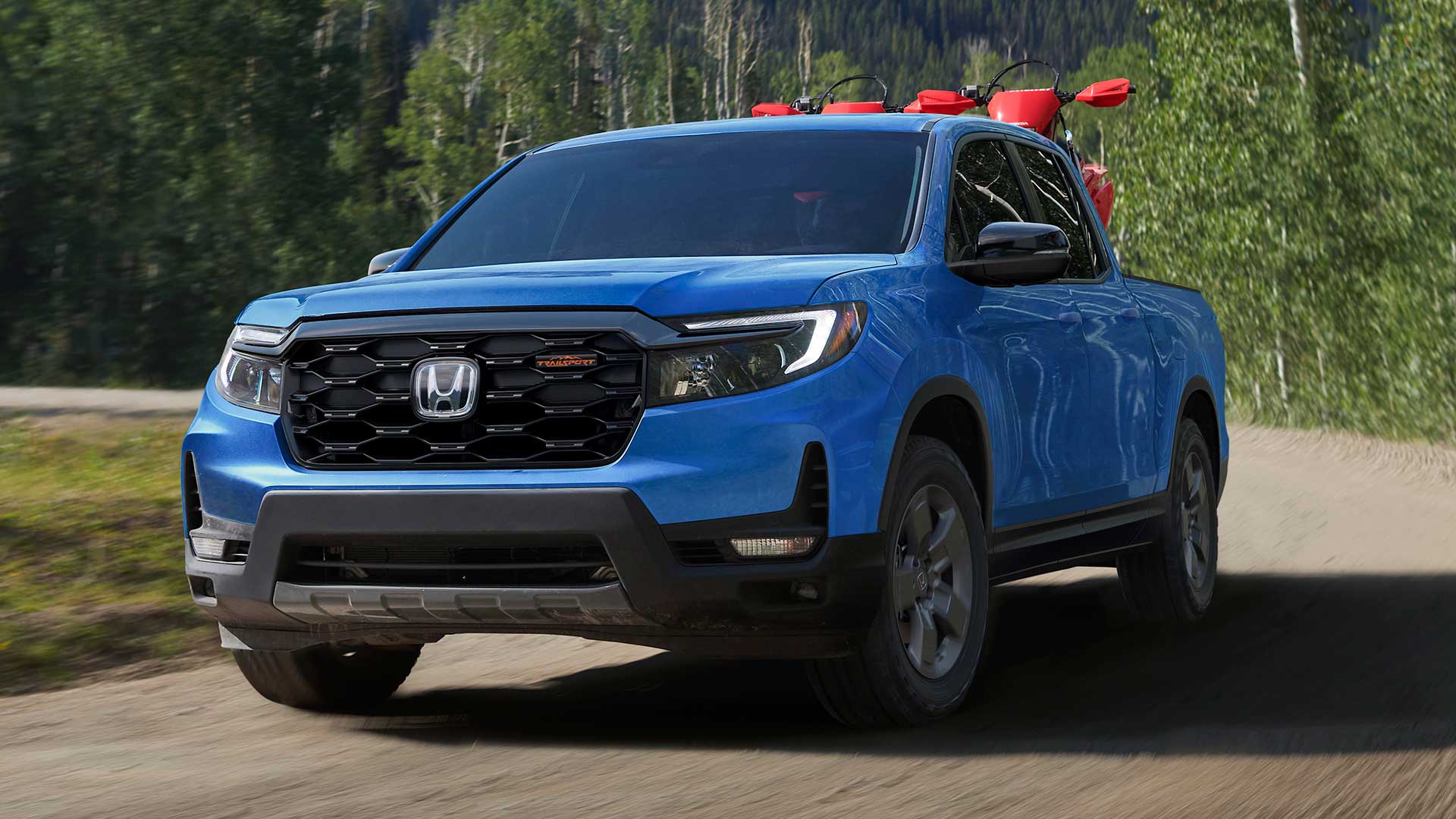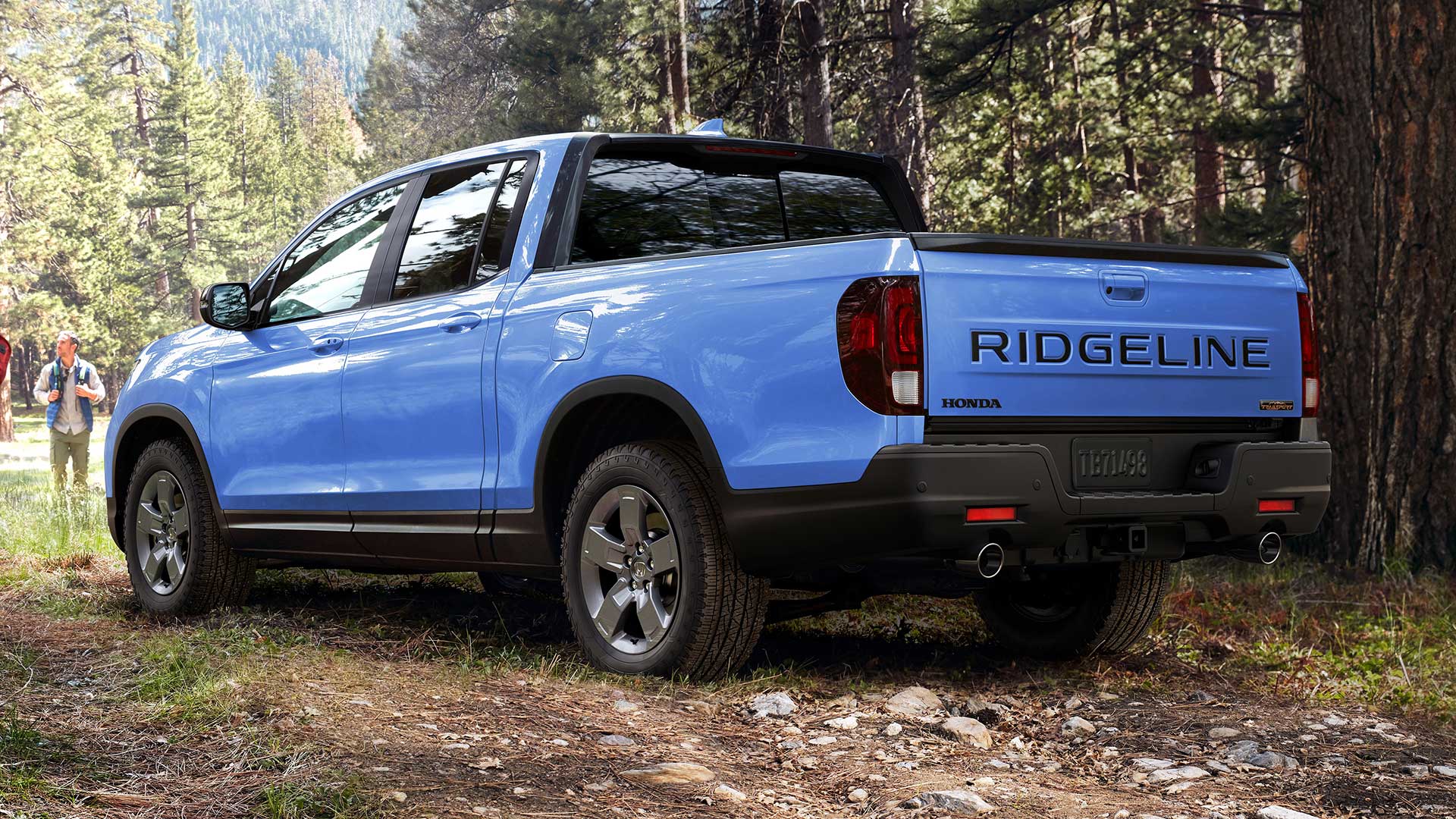2010 Subaru Outback
It was 1996 when Subaru decided to combine station wagon “garagability” with outdoorsy car-like utility. The Legacy Outback became known as “the world’s first sport utility wagon” and helped launch a new category of vehicles called crossovers. Since that time, mainstream crossovers have saturated the market, but the Outback has retained its unique and sporty wagon appeal, not to mention a growing fan base.
For 2010, the Subaru Outback enters its fourth generation and undergoes a full redesign. While Legacy is no longer part of its name, the Outback still shares its new platform with the sedan. This 5-door is wider, taller, yet a hair shorter than before. Wheelbase gains almost 3 inches to 107.9, yielding a larger interior.
And the new Outback isn’t just stouter, it’s more rugged-looking, while also taking cues from the new Legacy. The front end starts with a more upright grille, flanked by expressive-looking hawk-eye headlamps. On profile, scuff-resistant lower rocker moldings and body cladding further convey the Outback’s enhanced capability.
But this is no poser. With 16- and optional 17-inch wheels, ground clearance edges up to 8.7 inches, giving it more off-road potential than many crossover rivals. Up top are standard roof rails, with crossbars that swing into position only when needed, a segment first that helps minimize wind noise.
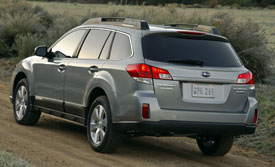 The body-colored D-Pillars help emphasize the new sectioned taillights, and give the Outback a more traditional rugged utility look than before.
The body-colored D-Pillars help emphasize the new sectioned taillights, and give the Outback a more traditional rugged utility look than before.
Hands-down, this is the roomiest Outback cabin to date. It’s also decidedly more upscale. Like Legacy, the dash is comprised of a variety of dissimilar shapes, well-drawn lines, and metallic trim.
Controls are laid out in a smart, easy-to-use manner. Ditto the standard electronic parking brake with hill holder, the first among non-luxury crossovers. And, with green motoring in mind, there’s even a gauge for monitoring fuel economy.
Seats are nicely contoured and padded for a high level of comfort. Our test 2.5i Limited had leather trim, 10-way power adjusters for the driver, as well as seat heat. A tilt/telescoping steering wheel with audio and cruise is now standard. This up-level tester also came with Bluetooth, dual-zone climate control, and a 440-watt Harmon-Kardon audio system. Other available high-end amenities include voice-activated navigation, a rear-view camera, and a power moonroof.
The spacious rear seat makes ample room for three and offers a new recline feature. The 60/40 fold adds excellent versatility to the Outback’s abundant cargo space. Room behind the 2nd row swells from 34.3 cubic feet to 71.3 with seats folded down. That’s a gain of 6 cubes over last year, and more than a Jeep Grand Cherokee. A pair of all-wheel drive boxer powertrains are also shared with the new Legacy.
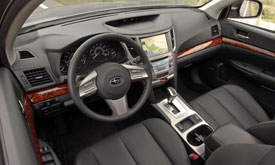 Standard is a revised 2.5-liter single cam four-cylinder with i-Active valve lift, outputting a square 170 horsepower and 170 pound-feet of torque. It pairs to either a six-speed manual or a CVT automatic.
Standard is a revised 2.5-liter single cam four-cylinder with i-Active valve lift, outputting a square 170 horsepower and 170 pound-feet of torque. It pairs to either a six-speed manual or a CVT automatic.
The 3.6R adds the Tribeca’s 3.6-liter 6-cylinder powerplant. This one sends 256 horses and 247 pound-feet through a 5-speed automatic.
Our 2.5 CVT generated Government Fuel Economy Ratings of 22 city/29 highway on regular gas. We achieved the expected 24.7 in real world driving.
The Energy Impact Score is a modest 14.3 barrels of oil consumed per year, while its Carbon Footprint measures a tidy 7.7 annual tons of CO2.
The downside to this environmental awareness is the long 10.1 seconds needed to get to 60 miles per hour. The quarter mile was equally painful at 17.8 seconds at 79 miles per hour. You can feel the boxer’s torque, but the CVT acts like a fire blanket.
The Outback sports a new double-wishbone rear suspension, and stability and traction control are now standard across the board. Still, handling is also no strong suit. Softly sprung, there’s very little feedback through the chassis. Steering is numb and lazy, and the high center of gravity results in lots of sway and body roll.
The Outback’s brakes are 4-wheel discs with ABS and new Brake Assist. Stops averaged a longish 133 feet from 60 to zero. There was good stability, but the Outback still stops like a much larger vehicle.
Fortunately, what the Outback lacks in track performance, it more than makes up for with a smooth, comfortable ride. It’s nice and cushy for long road trips and extended commutes. Pricewise, the new Outback begins at $23,690 for the base 2.5i. The 3.6R starts at $28,690.
The 2010 Subaru Outback returns with a bolder outer show, more utility-like practicality, and plenty of interior refinement. It’s not much of a driver’s car, but it’s ideal for family carting and an outdoor lifestyle. Add in mid-twenties fuel economy, and the Outback becomes an excellent alternative to the conventional crossover-and the main reason, we believe, that Outback’s popularity is bound to keep growing.
Specifications
- Engine: 2.5-Liter Single Cam Four-Cylinder
- Horsepower: 170
- Torque: 170 Lb Feet
- 0-60 MPH: 10.1 Seconds
- 1/4 Mile: 17.8 Seconds @ 79 MPH
- 60-0 MPH: 133 Feet
- EPA: 22 MPG City/ 29 MPG Highway
- Mixed Loop: 24.7 MPG
- Energy Impact: 14.3 Barrels Oil/Yr
- CO2 Emissions: 7.7 Tons/Yr
2024 Honda Ridgeline TrailSport
It Does Truck-Like Things Better Than Ever
Honda brought something truly unique to the pickup truck scene when their mid-size Ridgeline debuted for 2006. In 2017, it moved towards becoming a little more true truck-like, both in form and capability, now with yet another step in that direction for 2024. So, let’s see if the Ridgeline is really hitting its stride.
For 2024, it’s all about making this Honda Ridgeline better than ever. There are styling tweaks outside, along with tech and functional improvements inside, but the biggest news is the Ridgeline has now joined Honda’s TrailSport family of off-road inspired vehicles. This more-true-trucklike, second-gen Ridgeline been around since 2017, receiving periodic updates over the years; but joining the TrailSport family is the biggest leap yet.
Primarily, the TrailSport transformation includes General Grabber all-terrain tires, mounted on new Pewter Gray 18-inch wheels, steel underbody protection, and retuning the strut front, and multi-link rear suspension for added wheel articulation. And while we always appreciate the additional traction of off-road tires, the Ridgeline’s standard i-VTM4 all-wheel drive, with Intelligent Traction Management and snow, sand, and mud settings, was already quite capable of handling all but the most extreme off-roading, ground clearance of just 7.6 inches being it’s only real hinderance.
A 3.5-liter V6 remains under the hood as it has since the Ridgeline debuted for 2006; the current version outputs 280 horsepower and 262 lb-ft of torque, plenty enough muscle to handle its 5,000-lbs. towing capacity. A nine-speed automatic transmission with paddle shifters and bevy of push and pull buttons on the console replaced the six-speed automatic back in 2020.
In addition to adding TrailSport capability, a big focus for this update was making it more user-friendly inside, starting with the central touchscreen growing from 8 to 9 inches. It also gets faster processing speeds, menus have been simplified, and the native navigation system is improved with better graphics. It’s accompanied by a new digital instrument cluster, along with an upgraded center console with more storage space. Unique TrailSport touches include heavy duty floormats, leather-trimmed seats, orange stitching throughout the cabin, and orange ambient lighting.
The Ridgeline continues to offer things available nowhere else in the pickup truck market.
Exterior styling doesn’t exactly shout “macho big rig coming your way,” but the more vertical face and larger grille that arrived for 2021, along with this year’s added TrailSport elements, do continue to toughen up the Ridgeline’s image. The 5’4” bed remains highly functional with no large wheel well intrusions, multiple tie-downs points, lighting and even speakers. And of course, the Ridgeline continues to offer things available nowhere else in the pickup truck market, like the dual-action tailgate, and large, lockable, drainable, underbed storage. Not to mention being able to drive around in true car-like comfort, something we took full advantage of on our way to our Mason Dixon Dragway test track.
There was great grip off the line, with full power arriving smoothly but quickly, helping us to get to 60 in 7.0 seconds flat, a tenth quicker than the last Ridgeline we tested. That power delivery stayed fairly consistent the whole way down the track, barely interrupted by the nine-speed automatic’s smooth shifting. Our best quarter-mile run was 15.5 seconds at 90 mph.
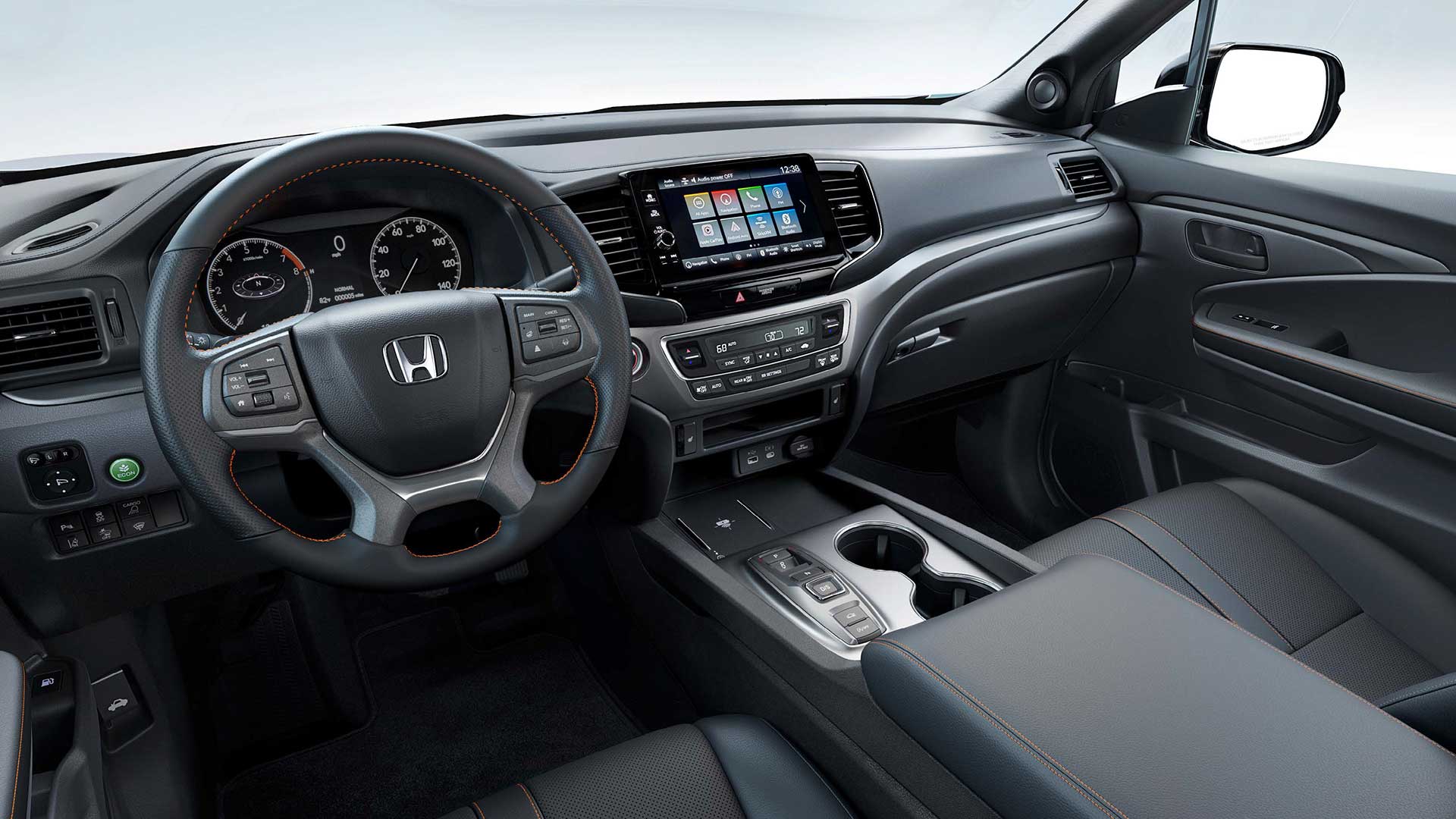
The revised suspension and knobbier tires didn’t really seem to add or detract from handling prowess, as it felt as solid, nimble, and car-like as it always has through our cone course. Perhaps a little less stiff than before, but good feedback, tight steering, and minimal body roll for a pickup, made for a very confidence inspiring experience. In our braking test, we stopped in a respectable average of 123 feet from 60, with only moderate amounts of nosedive and good feel through the pedal.
There is, however, a slight reduction in Government Fuel Economy Ratings with the all-terrain tires; 18-City, 23-Highway, and 20-Combined, our average, right on, at 20.4 mpg of Regular. That’s a slightly below average Energy Impact Score of 14.9 barrels of yearly oil use, with CO2 emissions of 7.4 tons.
TrailSport pricing falls in line just under the Ridgeline’s top Black Edition trim with a starting price of $46,375, about five grand over a base Ridgeline Sport.
So, whether you consider the Honda Ridgeline to be a “real” truck or not, this ruggedly smooth 2024 TrailSport does truck-like things better than ever. And we’re not just talking about the slight upgrade in off-road performance, we’re talking about a flexible bed to help you get chores done, and the ability to tow or haul with comfort and flexibility other trucks can only wish for. It’s why the Ridgeline brings more first-time buyers to Honda than any other vehicle, and why it continues to be a great choice in the growing midsize truck realm.
Specifications
- Engine: 3.5-liter V6
- Transmission: 9-speed automatic
- Horsepower: 280
- Torque: 262 lb-ft
- EPA: 18 City | 23 Highway | 20 Combined
- 0-60 mph: 7.0 seconds
- 1/4 Mile: 15.5 seconds at 90 mph
- 60-0 Braking (avg): 123 feet
- MW Fuel Economy: 20.4 mpg (Regular)
- Max Towing Capacity: 5,000-lbs








